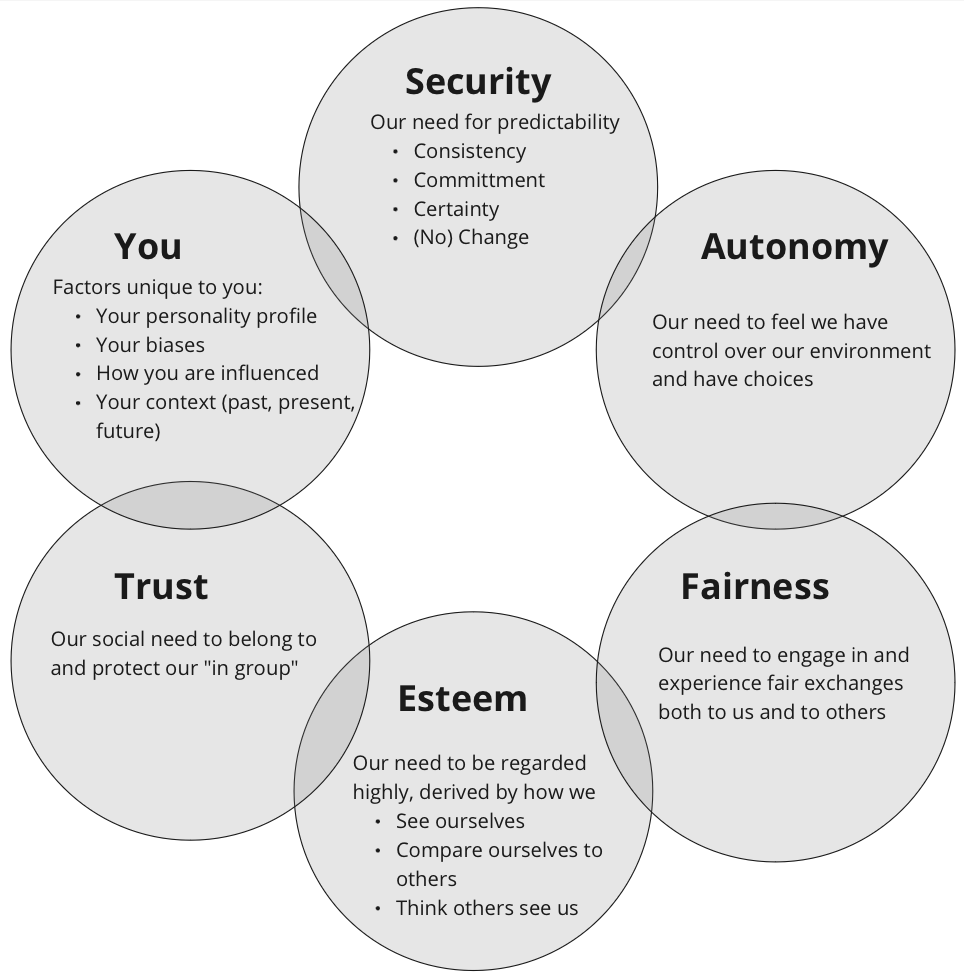I’m seeing more and more situations where someone will say “this is a safe space” in a meeting invite or at the beginning of a session. While I appreciate that the person saying the words really wants that to be true, the fact they feel the need to say it, highlights the fact that it probably isn’t. If it really were safe, we would already know that.

Well if saying the words isn’t enough, what would we have to do to actually make the space safe?
The SAFETY model of psychological safety tells us that there are five main categories that we have to satisfy, plus a grab bag of hard to pin down factors that are unique to each of us.
- Security
- Is the environment consistent and predictable?
- Do we know what’s expected of us?
- Are the teams stable with dedicated members or do we have frequent staffing changes or “fractional” people assigned across multiple teams?
- Do we have consistent routines or is every day something new?
- Autonomy
- Are we allowing people to make decisions that affect their own work or are we micromanaging?
- Are teams given problems to solve or are they given solutions and told how to implement them?
- Fairness
- Are people being treated equitably and fairly?
- Is the environment as a whole, fair? Note that it’s not necessary for a person to directly experience unfairness for it to impact their feeling of safety. They just need to perceive that unfairness is present in the environment.
- Esteem
- Can people speak freely without worrying if what they say will hurt their career prospects?
- Are they treated as valued members of the organization or are they just “resources” to be used and discarded?
- Trust
- Do we have trust between all the people involved?
- Are we all part of a strong team or is everyone fragmented into silos?
It’s worth noting that everyone is different and will have different levels of need for each categories. For example, one person might have a high need for security but a low need for autonomy while another person might be reversed. The point is that in order to provide safety across a large group of people, we need to satisfy all of these, not just pick and choose the ones we like.
See also:
- Polyvagal Theory, the science of feeling safe
- The Anti-Anxiety Toolkit: A collection of tips from neuroscience and psychology to let go of anxiety in the moment.

